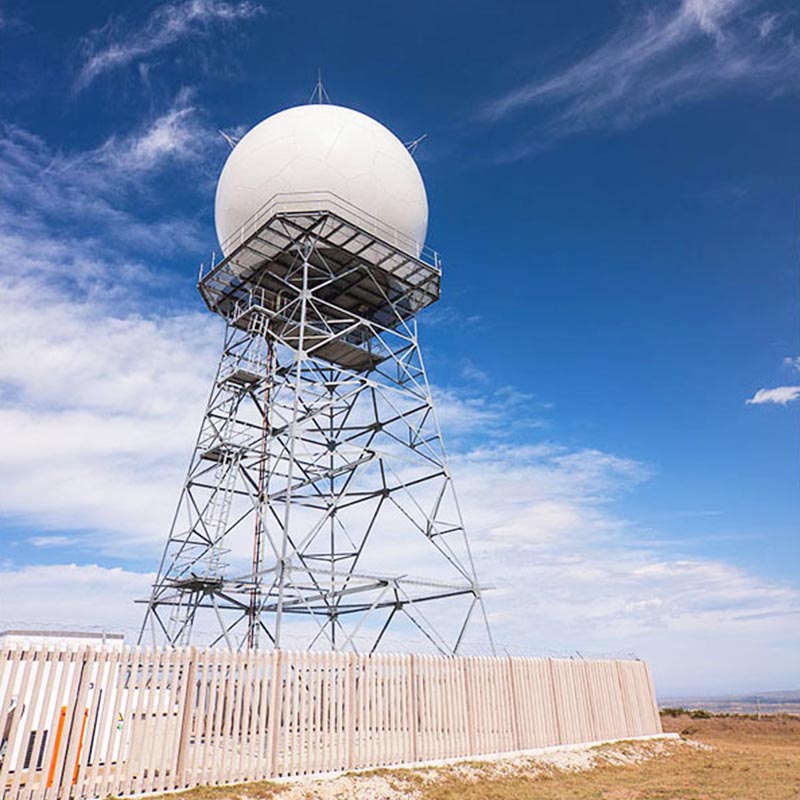Why Are Radar Towers Indispensable for Modern Surveillance and Navigation?
2025-08-05
In an era where global security, efficient transportation, and environmental monitoring are paramount, certain structures play a silent yet pivotal role in safeguarding societies and enabling seamless operations. Radar towers, with their towering presence and advanced detection capabilities, are among these unsung heroes. Far beyond mere steel and concrete structures, they serve as the eyes and ears of air traffic control, maritime navigation, weather forecasting, and national defense systems. But as technology evolves and new surveillance methods emerge, one question lingers: Why do radar towers remain irreplaceable in today’s interconnected world? How do they adapt to the demands of modern warfare, climate change, and the exponential growth of air and sea traffic? This guide delves into the critical functions, technological advancements, and enduring relevance of radar towers in shaping the safety and efficiency of global operations.
Trending News Headlines: Top Stories on Radar Towers
- "Airport Radar Tower Upgrades Reduce Flight Delays by 35% in 2025"
- "Coastal Radar Towers Detect 90% of Unauthorized Vessels in Recent Maritime Drills"
- "Military Radar Towers Integrated with AI Enhance Threat Detection Speed by 60%"
What Is a Radar Tower and How Does It Function?
- Primary surveillance radar (PSR): Emits its own radio waves to detect objects, providing basic information such as position and speed.
- Secondary surveillance radar (SSR): Relies on transponders in aircraft or ships to transmit additional data, such as identification, altitude, and flight number, enhancing tracking accuracy.
- Weather radar systems: Specialized equipment that detects precipitation, wind speed, and storm systems, providing critical data for weather forecasting and early warning systems.
- Communication antennas: For transmitting radar data to control centers, enabling seamless integration with other surveillance and navigation systems.
- Power backup systems: Generators and battery banks to ensure uninterrupted operation during power outages, a critical feature for emergency and security applications.
- Wind resistance: Taller towers must withstand strong winds, which can affect radar accuracy by causing vibrations. Engineers use aerodynamic designs and vibration-damping technologies to minimize this impact.
- Electromagnetic compatibility: The tower must be constructed with materials that do not interfere with radio waves, ensuring clear transmission and reception.
- Accessibility: Technicians need regular access to maintain and repair equipment, so towers are equipped with safe climbing systems, elevators (in taller structures), and maintenance platforms.
- Environmental protection: In sensitive areas, towers are designed to minimize their ecological footprint, with features such as bird-friendly designs to prevent collisions.
Key Advantages of Modern Radar Towers
Unmatched Detection Range and Accuracy
One of the most significant advantages of radar towers is their ability to detect objects over vast distances with high precision. Unlike ground-based sensors or satellite systems, radar towers can track objects in real time, even in adverse weather conditions such as rain, fog, or snow. For example, a coastal radar tower with a height of 100 meters can detect ships up to 50 nautical miles away, providing early warning of potential threats or enabling efficient traffic management in busy harbors. In air traffic control, radar towers can track multiple aircraft simultaneously, calculating their exact positions and speeds to prevent collisions and optimize flight paths.
Reliability in All Conditions
Radar towers are built to operate in some of the harshest environments on Earth, from freezing Arctic regions to scorching deserts and hurricane-prone coastal areas. Their robust construction—using high-strength steel, corrosion-resistant materials, and advanced insulation—ensures they can withstand extreme temperatures, heavy precipitation, and seismic activity. This reliability is critical for applications such as weather monitoring, where radar towers must continue functioning during storms to provide timely warnings, or military surveillance, where any downtime could compromise national security.
Integration with Advanced Technologies
Modern radar towers are not standalone structures but part of a larger, interconnected network of surveillance and communication systems. They can seamlessly integrate with artificial intelligence (AI) algorithms to analyze radar data, identify patterns, and distinguish between friendly and hostile objects. For example, military radar towers equipped with AI can quickly detect and classify incoming missiles, drones, or aircraft, reducing the time between detection and response. Similarly, in air traffic control, AI-integrated radar systems can predict potential conflicts between aircraft and suggest optimal evasion routes, enhancing safety and efficiency.
Cost-Effective Long-Term Surveillance
Our Radar Tower Specifications
|
Parameter
|
Specification
|
|
Height Range
|
50 – 150 meters
|
|
Material
|
High-strength galvanized steel (Q355B grade) with anti-corrosion coating
|
|
Structural Design
|
Lattice tower with square cross-section (4m × 4m at base, tapering to 1.5m × 1.5m at top)
|
|
Maximum Wind Resistance
|
70 m/s (equivalent to Category 2 hurricane)
|
|
Ice Load Capacity
|
60 mm radial ice thickness
|
|
Seismic Resistance
|
Up to 0.4g (suitable for high-seismic zones)
|
|
Maximum Equipment Load
|
20,000 kg (distributed across 6 equipment platforms)
|
|
Platform Configuration
|
4-6 levels, adjustable spacing (15-30 meters apart) with non-slip surfaces
|
|
Access Systems
|
Internal ladder with safety rest platforms every 10 meters; optional elevator for towers over 100 meters
|
|
Power Supply
|
Integrated power distribution system with backup generator connection
|
|
Foundation
|
Reinforced concrete slab foundation (depth varies by soil conditions)
|
|
Design Lifespan
|
50 years
|
|
Compliance
|
EN 1993-3-1 (Eurocode for steel towers), ICAO standards for aviation radar installations
|



